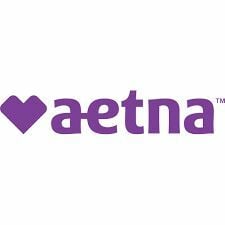Why choose The Thaiger?
The Thaiger will assist you with obtaining the right critical illness insurance to protect you from a variety of illnesses, including a stroke.
What is a Stroke?
A stroke is a disease that affects the arteries leading to and within the brain. When a bloodstream carrying oxygen and nutrients to the brain is either filled by a clot or bursts, a stroke can occur. When this occurs a section of the brain loses blood and oxygen leading to damage within the brain.
A stroke is a medical emergency that requires immediate attention. Brain damage and other consequences can be avoided if action is taken early.
Recovering from a stroke can be expensive, and most health insurance policies won’t cover you for the treatment and rehabilitation costs. This is where getting critical illness insurance can help you. With critical illness insurance, you will be provided with a lump sum cash payment. You can use the money for anything, whether it is to pay for your treatment, recovery, or living expenses, or on recovering.
Why Choose Critical Illness Insurance For a Stroke?
A stroke will have a significant effect on your finances as well as your ability to function. Life-threatening medical problems can strike at any time. Treatment, diagnosis, and recovery can all be covered by critical illness insurance
Pay Off Debts
It provides a lump sum payment. The considerable lump sum can be used to pay off your debts.
Treatment Expenses
It can be a supplement to your other coverages as critical illness insurance can be used to supplement out of pocket expenses.
Medical Costs
Critical illness insurance benefits can also be used for other medical costs, deductibles and copays, and even childcare expenses while you recover.
Recovery
It helps with housing costs, transport to and from hospital, rehabilitation, and in-home care during recovery.
Ongoing Expenses
The burden of ongoing living expenses, bills, and taxes is covered by critical illness insurance.
Who is At Risk of A Stroke?
A stroke can happen to anyone ay age. However, there are certain risk factors, where the chances of getting a stroke can increase. Some stroke risk factors may be altered or treated, while others cannot. However, many stroke risk factors are lifestyle related. Everyone can reduce their risk of having a stroke by making a few simple lifestyle changes.
Customer Ratings
4.6/5
20 reviews
Customer Reviews
6/1/2021
Excellent website, even for someone who is 70 years old, it is simple to navigate.
Isaac Manberg
14/1/2021
The team are so professional! They guide me to find a suitable plan and more benefits for my critical illness insurance.
Thomas S.
19/1/2021
Good and detailed explanation. I love their services, easy, straightforward, quick and very friendly, five-star service.
Vivian
11/2/2021
I got an insurance policy for my dad. Recently, he had a stroke and taken medication at a network hospital. I had cashless claims settled with the insurer, which was so useful to me.
Rose Edda
28/2/2021
I wasn’t thrilled with the online sign up portion; but, my agent took care of everything in just minutes
Charlie Miller
30/8/2020
The Thaiger was very helpful and gave me and my partner time to work over all the information.
James V.
Types of Critical Illness Insurance for Stroke
Critical illness insurance comes in many different forms, but we simplified it into two main types: individual and group critical illness insurance. Read the details carefully and choose the one that fits your needs best.
This is the type of critical illness insurance you buy on your own. It is the best choice if your employer doesn’t provide critical illness insurance as an employee benefit or you simply want more coverage. It offers more benefits than other types of critical illness insurance and is typically more flexible, meaning you can design it to meet your specific needs.
Individual critical illness insurance provides a lump sum cash that you can use for anything you need, whether it is for treatment expenses or everyday living expenses while you are out of work.
Key Points:
- Flexibility to allocate money as needed.
- Can be designed to meet your own needs.
- Simple application process.
- Tax-advantaged, cash benefit.
WStrokes can be scary, and not just for medical reasons. You need time to recover and take time off work, meaning you need to live without a paycheck, and you need to pay for any unexpected costs.
Due to these reasons, employers should provide their employees with critical illness insurance. It helps defend your employees against the high costs of having a stroke. With group critical illness insurance, your employees will be provided with a direct lump benefit.
Key Points:
- Lump sum benefit for your employees that can be used to pay for a stroke’s direct and indirect costs, such as rehabilitation and living expenses.
- Family-friendly plan, meaning your employee can include their children and spouses.
- Single plan for everyone, saving you the hassle of getting individual critical illness insurance for each person.
The Thaiger’s Partners




Stroke is the first cause of acquired disability in the world, so make sure you are insured.
I thought getting critical illness insurance that covers stroke in Thailand would be hard, but the Thaiger made everything so easy! Now I feel like I can live without worry and enjoy my time in this beautiful country with ease.
Top tip: Don’t be shy to ask any questions as the team will gladly answer eveything.
Different Types of Strokes and Their Signs and Symptoms
A stroke is a medical emergency. It’s essential to recognize the symptoms of a stroke and get treatment as soon as possible. A stroke’s effects depend on where it takes place in the brain and how big the damaged area is. There are three different types of stroke which are listed below:
Ischemic Stroke
The most frequent form of stroke is an ischemic stroke. It happens when a clot in a blood vessel stops enough blood from reaching the brain. Ischemic strokes are often caused by blockages caused by blood clots. An embolic ischemic stroke occurs when a blood clot spreads from another area of the body to the brain. An approximate 15% of embolic strokes are caused by atrial fibrillation, a disease in which the heart beats irregularly.
Hemorrhagic Stroke
When a blood vessel ruptures or leaks, causing bleeding in the brain, it is defined as a hemorrhagic stroke. The blood that accumulates as a result of the bleed compresses the brain tissue around it. A hemorrhagic stroke, like other types of strokes, can result in rapid tissue death. The symptoms of a hemorrhagic stroke are mainly similar to those of an ischemic stroke.
Transient Ischemic Attack
A transient ischemic attack (TIA) is also known as an alert or ministroke by doctors. A transient ischemic attack (TIA) is similar to an ischemic stroke. It blocks the blood supply to the brain for a short period of time. TIAs, unlike ischemic strokes, do not appear to cause long-term brain damage, according to medical experts. The blood clot and TIA sign only last a few minutes.
Join the many satisfied customers who’ve got their Critical Illness Insurance for Strokes with the Thaiger
Other Related Products
Below is a list of other critical health conditions that are covered by critical illness insurance.
Kidney Failure
When your kidneys become unable to filter waste products from your blood, kidney failure happens.
Cancer
Cancer is the common term for a group of diseases. Any of the body’s cells begin to divide uncontrollably and expand into surrounding tissues in all cases of cancer.
Heart Attack
When the blood supply to the heart gets blocked, a heart attack happens, and spontaneous cardiac arrest happens when the heart malfunctions and stops beating unexpectedly.
Lung Disease
Lung disease is any problem in the lungs that prevents the lungs from working properly.
How Can a Healthy Lifestyle Help In Avoiding Strokes?
How do you enjoy a happier and better life? If you’ve never had a stroke, these key factors will help you reduce your risk. They’re an important part of living a safe lifestyle.
Know Your Risk
Knowing your risk factors will assist you and your medical team in determining the right recovery option for you. Many risk factors may be reduced by altering one’s lifestyle.
Controlling High Blood Pressure
This is one of the most important things you can do to reduce your stroke risk. If you’ve had a stroke, lowering your blood pressure can help prevent you from second stroke.
Eat a Healthy Diet
Vegetables, fruits, whole grains, legumes, nuts, plant-based proteins, lean animal proteins, and fish can all be part of your diet.
Watch Your Weight
Stay at a healthy weight for you. Lose weight if you’re overweight or obese.
Take Your Medicine
Your doctor can recommend statins or other medications to help control cholesterol, blood sugar, and blood pressure if you have a medical condition. Take the prescriptions exactly as prescribed.
Quitting Tobacco Use
Smoking raises the risk of stroke for smokers and nonsmokers exposed to secondhand smoke. Quitting tobacco use reduces your risk of stroke.
Exercising Regularly
Aerobic exercise lowers the stroke risk in a variety of ways.Exercise will help you decrease your blood pressure, boost your good cholesterol levels, and improve the health of your blood vessels and heart.
Kidney Failure
The most important thing you can do to protect your kidneys is to take care of your body so you don’t get infections that strain them. If you have critical illness insurance, you can get a lump sum to offset the expenses of kidney recovery
If your kidneys are damaged, they will not do as well as they can. If the damage to your kidneys continues to get worse and your kidneys are less and less able to do their job, you have chronic kidney disease
Acute prerenal kidney disease can be caused by a lack of blood supply to the kidneys whereas Chronic prerenal kidney failure occurs when the kidneys have been damaged for a long time
Start learning early about treatment options – before you need one. Creating a treatment plan and sharing it with your family gives you more control.
Another protection you can give to your kidney, besides taking care of your body, is to get critical illness insurance. With this insurance, you can rest assured to get the best care available whenever you need it.
Frequently Asked Questions About Stroke
There are two primary causes of stroke: a blocked artery (ischemic stroke) and a blood vessel that leaks or bursts (hemorrhagic stroke)
When blood flow to the brain is disrupted or a blood vessel in the brain ruptures, a stroke occurs.Brain cells begin to die without blood, and the functions controlled by that area of the brain—such as speech or muscle movement—become affected
The initial recovery after a stroke is most likely due to reduced brain tissue swelling, the elimination of toxins from the brain, and improved blood pressure in the brain
Stress causes the heart to pump faster, raises blood pressure, and increases blood sugar and fat levels. These factors may raise the risk of blood clots forming and moving to the heart or brain, resulting in a heart attack or stroke
An IV injection of recombinant tissue plasminogen activator (tPA) — also called alteplase (Activase) — is the gold standard treatment for stroke
Yes, The illnesses insurance covered include cancer, heart attack , stroke, kidney failure, lung disease and many more
Inquire Now to Receive your Critical Illness Insurance for Strokes Quotes